What is it?
As capable as the last Force Gurkha was in the rough, it was ultimately too basic a vehicle and one that was of little interest outside the off-road community. And that’s where the new Gurkha comes in. First shown at Auto Expo 2020, the new Gurkha is engineered to be adept as ever in the wild while offering greater everyday usability, more creature comforts and improved refinement - crucial enhancements that should open it up to a larger buyer base. The approach is not too dissimilar to what Mahindra tried with the new Thar and we all know how that has panned out. Force Motors acknowledges that the massive mainstream interest in the Thar will have a positive rub-off on the new Gurkha too, and is upskilling its sales and service staff to better cater to a more urbane clientele. Off-road events and owners clubs are also part of the broader plan to build a community around the product.
While a 5-door Gurkha will come soon, featured here is the 3-door hard top that the new Gurkha will launch with.
What’s it like on the outside?
With its boxy shape, cliff-faced sides, clamshell bonnet, round headlights et al, the new Gurkha carries forward the old one’s ‘G-Class for the masses’ look. However, the overall treatment is far more sophisticated and something that becomes very evident when we see Gurkhas old and new together. Every panel is new and, the shutlines are tighter and the enhanced quality level alone elevates the Gurkha from a rudimentary off-roader to something more lifestyle-y. The flamboyant shade of orange helps to this end too.
The new model has its share of eye catching details as well. It wears the new ‘GURKHA’ lettering on its grille as a badge of honour. The traditional round headlights are now all LED units and get a cool jewel-like Daytime Running Lamp theme. The high-set position of the indicators hasn’t been tinkered with but the bonnet is chunkier, the front bumper is fuller. There’s a heavy duty bash plate too that gives the Gurkha sufficient street cred. And like the previous Gurkha, this one’s snorkel is standard. Official wading ability is rated at 700mm.
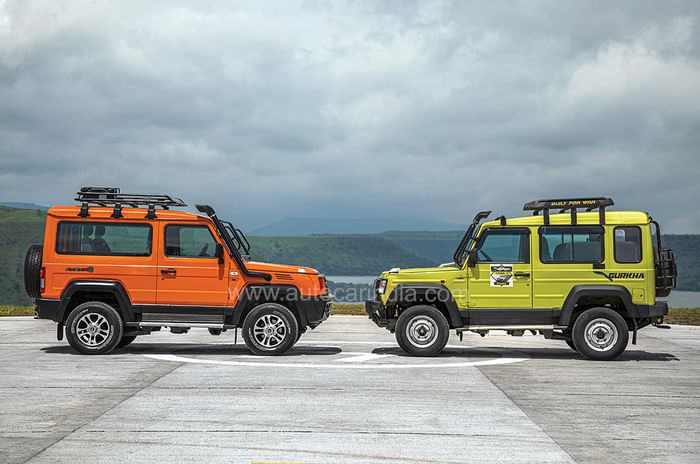
Of course, there’s heavy cladding around the wheel arches and what’s nice is that the standard fit footboard has been neatly integrated into the look. At the sides, however, it’s the single pane rear glass (in place of the three-part windows) that does the most to distinguish the new Gurkha. The large rear window can’t be opened but a sliding window option could be on the cards for future variants. Flush-fitting windows, higher-set tail lights that sit on the body work (rather than on the bumper) and a new bumper are the changes of note at the back. A full-size spare tyre that sits on the tailgate completes the look.
There’s scope to personalise your Gurkha too. Our test car was decked up with a rear ladder, roof rack with a jerry can holder and A/T tyres, and there’ll be more on the accessories menu too.

In size, the new Gurkha is marginally wider (22mm) and taller (20mm) than the old model but overall length is up by a substantial 124mm. The added length comes mainly courtesy the longer front overhang that was required to incorporate structures to meet the new crash and pedestrian protection norms. At the Gurkha’s core is a new high strength ladder frame chassis that Force says offers best torsional rigidity in the segment. The frame is designed to support four length configurations with the 3 door Gurkha’s 2,400mm wheelbase being identical to the old model’s.
Also, like the last-gen Gurkha (Xtreme excluded), the new one features an independent, double wishbone front suspension and a multi-link, live axle arrangement at the back, with anti-roll bars front and rear, and coil springs at all four wheels. The suspension has been tuned to provide better isolation from bumps and work has also been put in for greater refinement from the body-in-white.
What’s it like on the inside?
As on the old Gurkha, you’ll need to make the most of the footstep and grab bar at the A-pillar to work your way into the new one’s high-set cabin. Inside, there’s seemingly decades between the two SUVs. Sure, it’s not cutting-edge by any measure and the shiny plastics are sub-par by modern standards but the full length dashboard, rotary air-con vents and even the storage slots between the front seats make this a more habitable place. Also, vastly improved are the ergonomics. The front seats are large and supportive, tilt and telescopic steering adjust helps find a reasonably comfortable driving position, the speedometer and tacho dials are in clear sight (the old Gurkha positioned the tacho on the dash) and the air-con controls on the new centre console are also easy enough to reach.
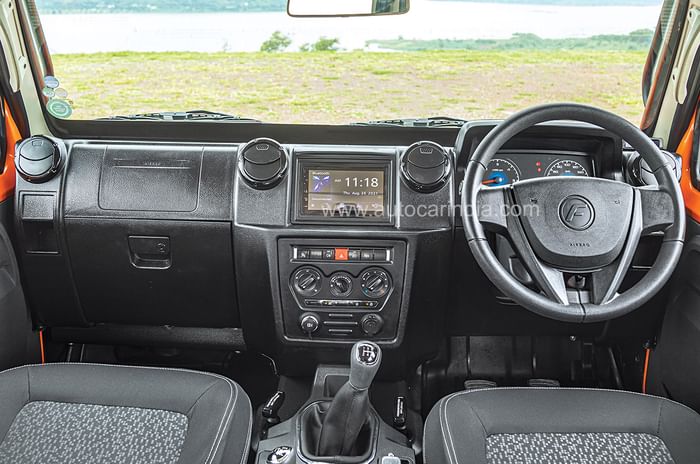
What also does its bit to bring the cabin to the present is the new 7-inch touchscreen infotainment system. It isn’t particularly slick but handily does pack in Android Auto and Apple CarPlay. There’s an aftermarket-looking tyre pressure monitoring system too that sits near the instrument cluster. Other features include front power windows (the buttons for which sit near the gear lever), central locking and a rear wiper while dual airbags, speed-sensing door locks and rear parking sensors are part of the safety suite.
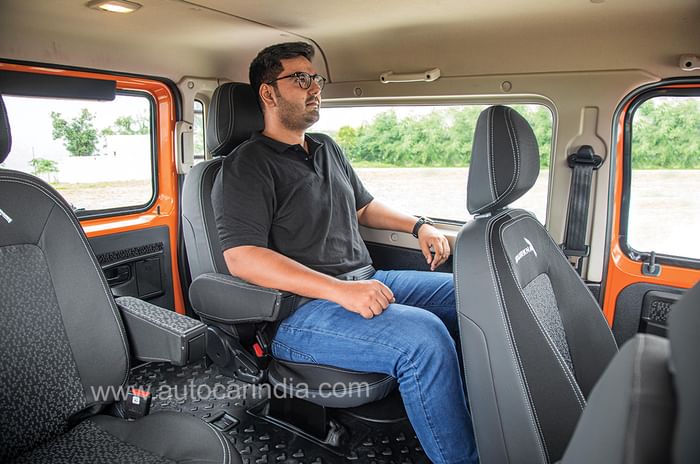
The big highlight inside the Gurkha is the level of comfort for rear seat occupants. The rear seats comprise two forward-facing chairs, access to which is via the side-hinged rear door. A footstep helps with the steep climb up and you have to duck walk your way through the passage between the seats; but it sure beats entering via the front door and contorting yourself as in the Thar. Space at the back of a Gurkha is good for full-sized adults and even larger occupants will feel at home on the sizeable seats. The seating position is comfortable, the thick window sill acts as a natural armrest and you also have the option to adjust the backrest and seat armrest angle. Do note, taller passengers will find the top of the windows at eye level so will need to recline their seats a bit to get the best view out. And while there are no dedicated air-con vents at the back, the strong air conditioning means you can literally chill out at the back. On the whole, far from being a claustrophobic space, the rear section of the Gurkha cabin feels airy with its massive windows and ample head and shoulder room.
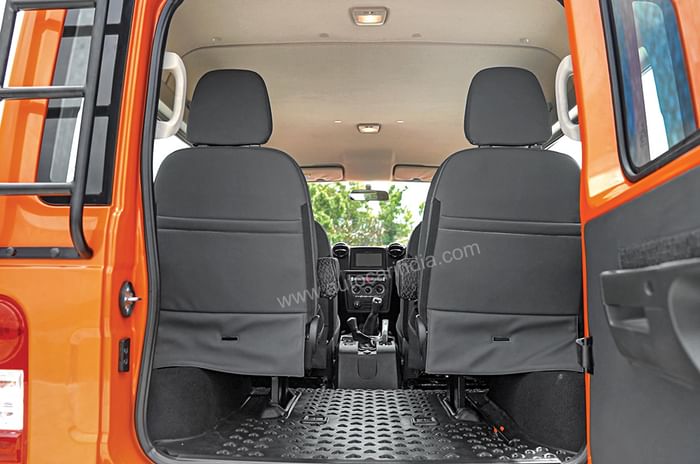
The Gurkha also impresses in terms of luggage space. You can stow large suitcases behind the rear seats but will also need serious might when it’s time to load and unload.
What’s it like to drive?
You won’t have to drive too long to experience one of the biggest areas of improvement on the new Gurkha – refinement. It’s not as quiet as a mainstream SUV but compared to the old Gurkha there’s significantly less ambient noise, less road noise and even the engine runs quieter. The engine in question is the long-standing Mercedes-derived 2.6-litre diesel that’s been upgraded to BS6-spec. Before you ask, the 140hp, 2.2-litre diesel from the old Gurkha Xtreme has been dropped and there won’t be any petrol option either. In BS6 avatar, the Gurkha makes 91hp and 250Nm from its 2.6-litre engine, which is a mild bump up in power and torque. The figures, however, do not tell you much about this unit’s characteristics.
It’s an easy going engine with plenty of pulling power low down in the rev range. The engine is done with its best by 2,500rpm and the party’s over by 3,500rpm beyond which it doesn’t rev. It’s commercial vehicle engine-like in its power delivery because it’s designed for that role; the unit also powers the Force Trax people mover. The easy access to power means you can get by with fewer gear shifts which is just as well because the Mercedes-derived G28 5-speed unit isn’t the nicest to use and the shift action occasionally leaves you second guessing gearchanges. The clutch is light but a more progressive action would be nice. A dead pedal to rest your left foot on would also be a welcome inclusion.
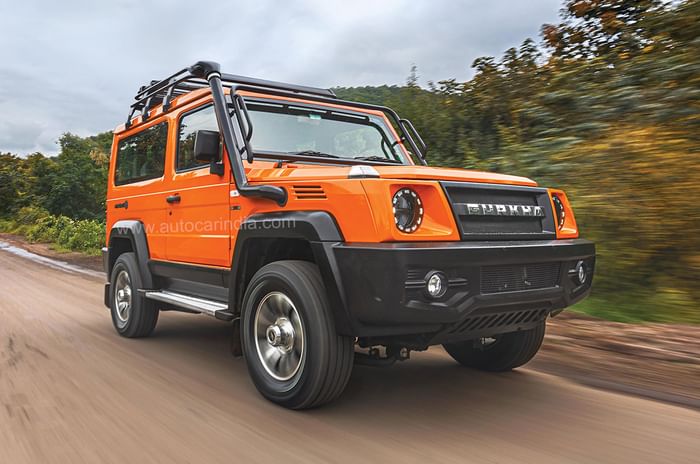
The Gurkha gets up to speed in an unhurried manner and will maintain a steady cruise but punchy it ain’t. On the plus side, you won’t lose momentum to slow down for broken patches of road. The Gurkha on its chunky tyres and long travel suspension smoothens bombed-out surfaces with absolute authority. That ladder frame typical judder to the body is well contained and more than anything it’s the strong kickback at the steering that will tell you how bad the surface below really is. There’s also play at the steering and what’s clear is that quick cornering isn’t the top heavy Gurkha’s forte which is only to be expected. For its part, the slow-geared steering calls for many turns lock to lock but it’s easy enough to twirl and the 11.3m turning circle is manageable too. A reverse camera would have made life easier though. What also gets our vote is the ride quality at low speeds. It’s cushy without feeling overtly soft.
What’s it like off-road?
It’s when you leave the road and hit the trail that the Gurkha comes into its element. The slushy pits, rocky sections and hillocks on our path don’t challenge the Gurkha, and fact is, it’ll achieve more in two-wheel drive than most namby pamby SUVs would in their off-road setting. Visibility is excellent and the squared-out shape make it easy to place on narrow paths as this one.
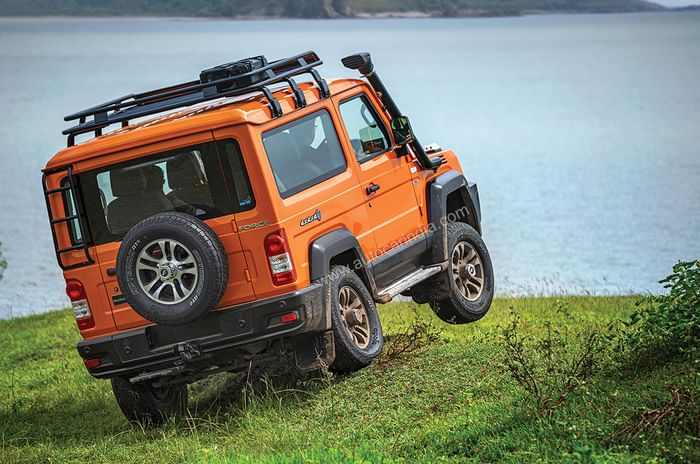
In 4-High (engaged via the 4WD gear lever), the Gurkha is absolutely unperturbed by side inclines and the like. And thanks to its short wheelbase, 205mm ground clearance (at the rear differential) and good off-road angles (approach -37deg, breakover - 25deg, departure – 33deg), it can tackle a series of large humps like an invertebrate. The rear footboard did ground once at a steep departure but that’s all that touched. You’ll actually have to try hard to get yourself into trouble. A hump taken at an awkward angle finally did the trick on our test drive. The independent front suspension doesn’t offer enough articulation to let the tyre all the way down, and what that left us with was the front right tyre in mid-air and spinning helplessly. In the Gurkha’s off-road arsenal are rear and front diff locks, and it’s the latter that sees us through. Locking the diffs is quite a physical process in a Gurkha and takes a hard pull and a firm twist of a lever at the centre console. Doing so seemingly unlocks beast mode because the Gurkha just dismisses the same obstacle in our next attempt.
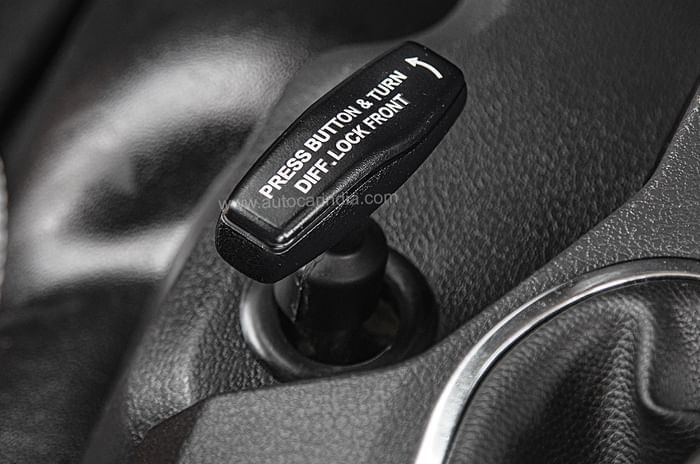
4-Low comes into play as we attempt a steep hill climb. The Gurkha’s low speed idling has been calibrated to allow it to climb without any throttle inputs and it chugs along up the Martian surface of loose rock and mud without breaking a sweat. The sight of a gorgeous sunset at the summit makes the slow crawl up worth it. As a picnic car, the Gurkha will sure take you far.
Should you buy one?
If there’s one key takeaway of the day with the new Gurkha, it’s that it’s not a one trick pony like its predecessor was. That is, great off-road but compromised in every other respect. The Gurkha has become more practical, friendlier and cooler even, and has evolved to the extent that it can be thought as your only vehicle. Make no mistake though because the Gurkha is still no softie. It’s very much a hardcore off-roader first whose natural habitat is the real jungle and not the urban jungle. Those looking for the latest of gizmos and car-like comfort need not apply.
An automatic transmission option would have made the Gurkha easier to live with and the plastics could do with an upgrade as well. Even so, there’s a likeable ‘what you see is what you get’ honesty to the package. Likely to be priced at around Rs 13 lakh (estimated, ex-showroom), the Gurkha remains a committed buy but one that’s become a whole lot easier to commit to.
The Thar factor
You can’t talk of the new Gurkha without bringing in the new Thar. There are some clear differences that come through over a static evaluation. The Gurkha is taller but the Thar on its wider tracks has the more planted stance. The Mahindra has the clear edge in terms of cabin quality and packs in a few more features too while the Gurkha easily walks away with the prize for the best back seat.
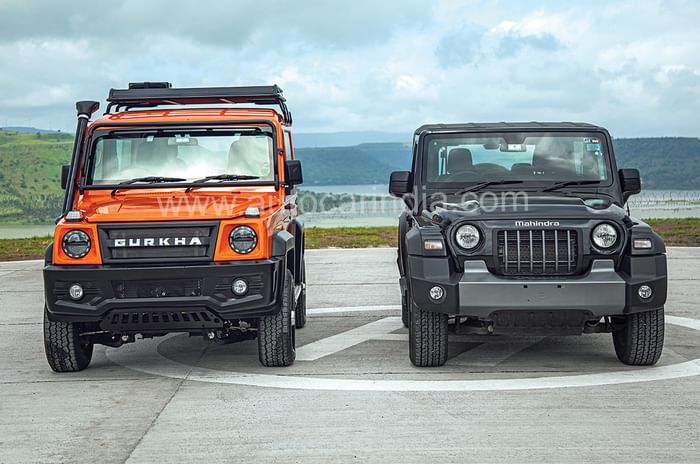
A specification check tilts the balance in the Thar’s favour. Force’s 91hp/250Nm, 2.6-litre diesel is no match, on paper at least, for Mahindra’s new-gen 130hp/300Nm, 2.2-litre diesel and 150hp/320Nm, 2.0-litre petrol engines. Automatic transmissions are exclusive to the Thar too.
The Thar has the slightly better off-road angles, packs in hill start assist and hill descent control and also features ESC-based brake lock differential for the front wheels. The mechanical rear locking differential engages automatically on selecting 4-Low. The Gurkha comes sans electronic aids but gives drivers more control with its selectable front and rear diff locks.
We can’t wait to see the two slug it out.


































